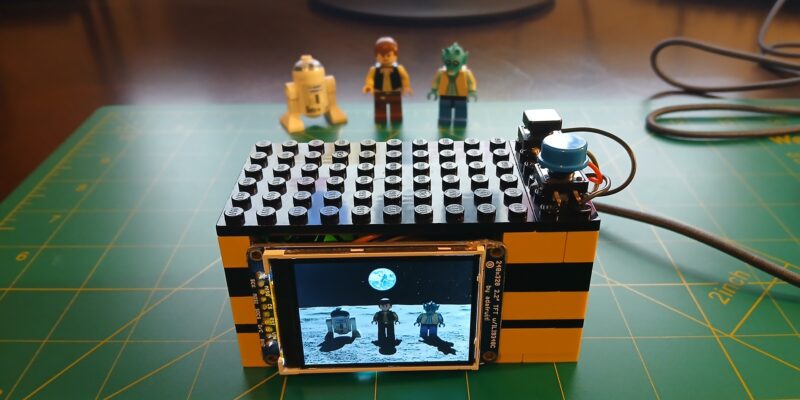BedBot alarm project
By Russell Barnes. Posted

An over-engineered alarm clock built into a bedside table that wakes you up with music. It’s also powered by a Raspberry Pi
Advertisement
Christmas is coming – keep Santa on the right track with our Raspberry Pi gift guide!
The full article can be found in The MagPi 37
When you think of an alarm clock, you probably get an image of a silver, analogue clock with bells on top. Thanks, television. No one really uses that any more, starting with the invention of clock radios and the Teasmade, and right up to smartphones acting as our alarm clock and morning newspaper. What’s the next step in the evolution of waking up in the morning? Well, it probably won’t be the Bedbot, but it’s really cool either way.
The Bedbot is, according to its creator Peter Roca, “My Daytime Initialization Assistant – a digital alarm clock/radio with a fancy wooden enclosure. It is a crude, over-engineered, expensive piece of hardware.”
The idea came to him after being a little fed up with the kind of radio programming he was getting when he woke up in the morning (apparently a little later than most people). “I realised that I could use my new RPi to create a radio device that could bypass trivial things such as NPR’s morning program schedule.”
The Raspberry Pi is built into a walnut and maple side table, with a little screen that flips up when the alarm starts the radio. From the images, you can see that the relatively small table has a lot of electronics packed into it. The table was also made by Peter.
“I started woodworking about four years ago in my free time,” he tells us. “I really enjoy creating interactive systems which is why this project was so fun for me. Working in my shop is cathartic and it offsets the lethargy that working in an office inevitably encourages. I think a lot of software developers eventually pick up some kind of hobby that requires using your hands for something other than typing.”
The electronics comprise the Pi, WiFi and Adafruit PiTFT screen, along with a small OLED, USB audio cards and custom speaker system, servos for the screen to flip up, several buttons, and lots of other custom-built bits to the get the look and effect he wanted. Next came the programming, which wasn’t too complex.
“The only complicated part is how I designed the Python module system. Each major feature of Bedbot is considered a ‘module’ and has no dependencies on other modules, so that modules can be added or removed without breaking anything else… if it’s configured correctly, Bedbot will find the module and load it automatically into the menu system. There are hooks to allow for modules to communicate with each other through a broadcast system. I designed it this way to allow for anyone to write their own module without having to dig into the code of the entire system.”
The proof is in the pudding, as they say, so how well does it work?
“Well, I haven’t been late to work yet!”

Russell runs Raspberry Pi Press, which includes The MagPi, Hello World, HackSpace magazine, and book projects. He’s a massive sci-fi bore.
Subscribe to Raspberry Pi Official Magazine
Save up to 37% off the cover price and get a FREE Raspberry Pi Pico 2 W with a subscription to Raspberry Pi Official Magazine.
Sign up to the newsletter
Get every issue delivered directly to your inbox and keep up to date with the latest news, offers, events, and more.



